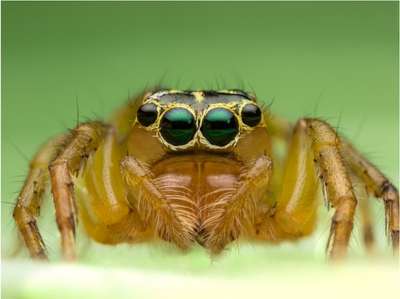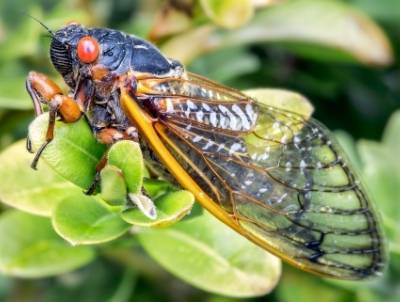All snakes are essentially long cylinders of muscles, a backbone, and many, many ribs enclosed in tough scaly skin. They have no limbs, hands, feet, claws, talons, or flippers so it’s natural to wonder – How do snakes move around?
Snakes move by coordinating complex movements of their muscles, skin, and scales to push and pull themselves forward. Snakes use several different movement patterns at different times, depending on the species, their goals, and the substrates over which they move.
At first glance, snakes might seem to be at a disadvantage when it comes to moving through their environments. But nothing could be further from the truth. Snakes are superbly adapted to propelling themselves on land, in water, and even up trees and they use the same movement patterns to do so.
For details of how snakes climb, check out this other Now I Wonder post “Can snakes climb trees?” and for details of how snakes swim check out this other Now I Wonder post “Can snakes swim?”. This post focuses on how snakes move over dry ground.
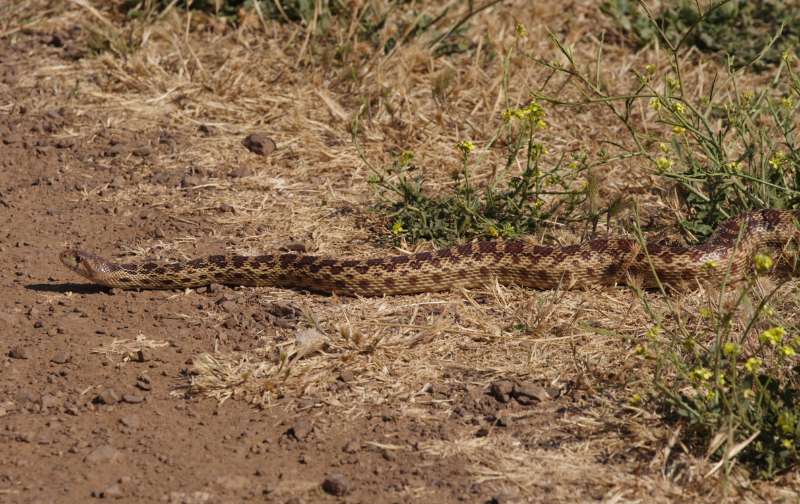
Body posture
Snakes have two major advantages over limbed animals such as humans when moving: they need not fear falling and their bodies have much greater surface area over which friction can work.
Every creature has a center of gravity, the point at which the force of gravity is concentrated, and can easily balance if its center of gravity is supported by its base. More force is required to tip a low, wide object over than a tall narrow one, because the low, wide base of support results in a low center of gravity.
Snakes are extremely stable because their centers of gravity are supported by the entire length of their bodies. They can’t fall unless they climb trees and artificially elevate their centers of gravity.
The survival advantage for this limb-free, belly down body posture is obvious when compared to humans. Human center of gravity is usually around 65% of height for men, and 55% of height for women (Liu 2021), which combined with our upright, two-legged anatomy, contributed to 29 million falls – and 27,000 deaths – in adults over age 65 in 2014 (Bergen et al. 2016).
Skin and scales
Movement in snakes depends on its ability to push against rough spots on the ground surface with its muscles and belly (or “ventral”) scales. A snake placed on a smooth sheet of glass will simply writhe around because the surface is too smooth; their bodies have nothing to brace and push against.
Snake skin is flexible, as are the individual scales, which are attached to the skin at one end and overlap. Like the rest of its body, the average snake’s belly is covered in scales. These ventral scales “hook into” rough spots on the substrate and then push backwards, propelling the snake’s body up and forward.
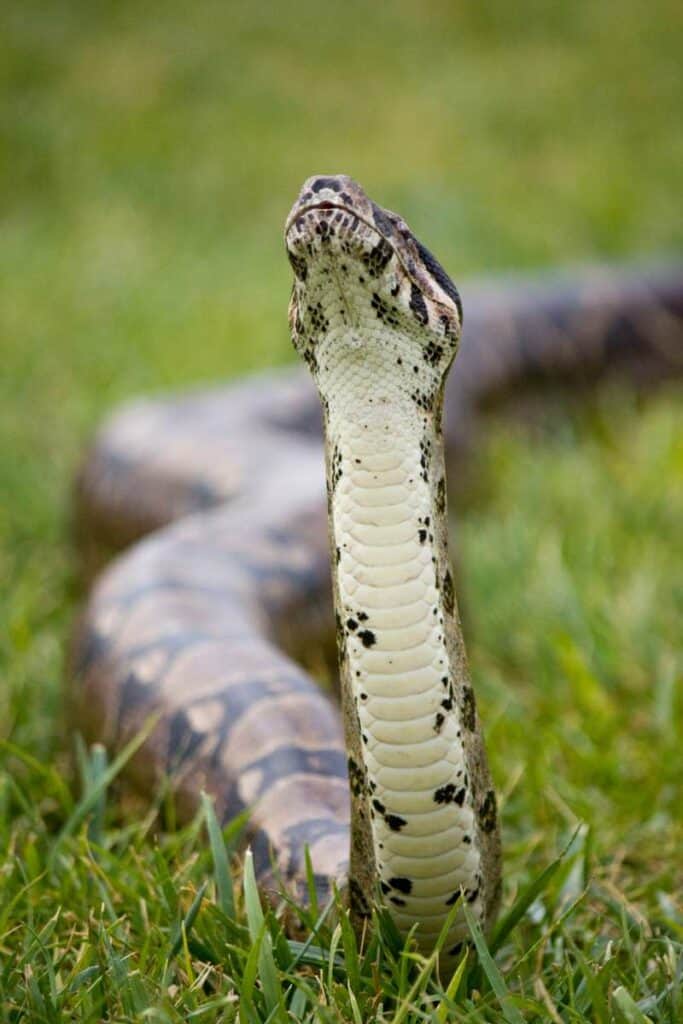
Movement patterns
Lateral undulation
Lateral undulation is the movement pattern that most snakes use most of the time. It is the extremely smooth “slithering” motion that most people are familiar with and that they think of when they imagine moving snakes.
In lateral undulation, a snake curves its body into a series of side-to-side S waves that start at its head and move smoothly towards its tail. The muscles on opposite sides of the snakes alternately contract and relax to form the S waves, and the snake’s brain coordinates the muscular action precisely to move the wave down the length of its body.
The portion of the snake’s body through which the curve moves drives the forward motion by pushing back against the substrate. Because a laterally undulating snake has several waves in progress simultaneously, the movement is powerful, smooth, fast, and efficient.
Snakes can move very quickly when laterally undulating over rough ground. Although no snake is faster than a fleeing human, some snakes can still rack up impressive speeds, especially if they happen to be slithering straight towards you.
The black racer snake (Coluber constrictor) is one species known – and named – for its speed. Commonly found throughout the southeastern United States, it can grow to nearly 6.5 feet (approximately 2m) and can slither over 3 1/2 mi (5.6 km) per hr (LaGasse 2018).
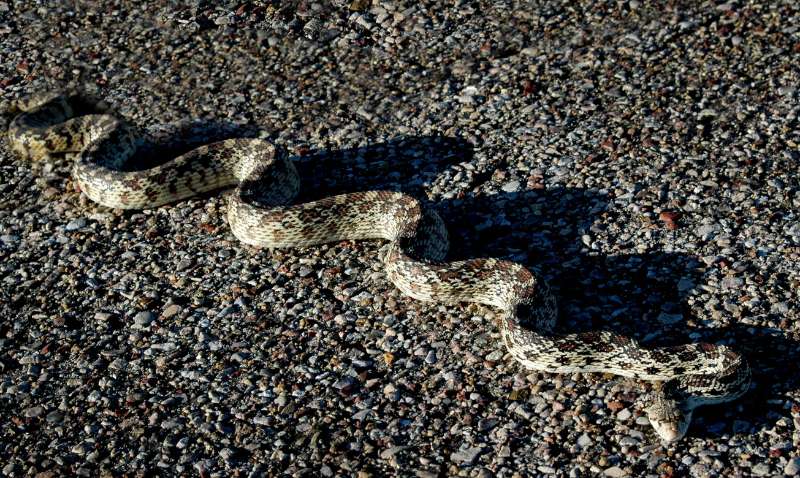
Concertina motion
Concertina motion is the next movement pattern in snakes. Snakes switch to concertina motion when traveling over smoother surfaces that offer fewer friction points against which the snake can push.
In concertina motion, a snake moves by alternately kinking and stretching different parts of its body. First, it anchors the head and front section of its body against the substrate with its ventral scales. Then it contracts its muscles to drag the tail end closer to the head. Then it reverses the movement so that the tail end anchors while it pushes its head section forward. Like the S waves of lateral undulation, the kinking and stretching motions alternate and propels the snake forward.
Concertina motion is a start-stop process; it is both less efficient and slower than lateral undulation.
Rectilinear motion
The next movement pattern in snakes is called rectilinear motion.
Rectilinear motion is powered by complex, tiny movements of snakes’ skin and ventral scales. Unlike lateral undulation and concertina movement, which are primarily side to side movements, rectilinear motion is up and down, like that of an inchworm or caterpillar.
A snake using rectilinear motion makes a series of tiny, alternating, up and down waves with its belly from head to tail, dragging itself forward using its ventral scales. Rectilinear movement can be fast or slow but it is always subtle; a snake’s advance can be nearly imperceptible as it avoids the wide body bends and whip-like waves of other patterns. For this reason, snakes use this pattern to sneak up on prey rather than to travel quickly.
Sidewinding
The final movement pattern is called sidewinding and is the least common because only certain species can do it. Sidewinding snakes are found in desert areas around the world. The United States has one species, the sidewinder (Crotalus cerastes) which is found in southern Nevada and south into Mexico (Conant and Collins 1998), and propels itself across loose, hot desert sand using this special pattern.
Like laterally undulating snakes, sidewinding snakes also curve their bodies into a series of traveling, side-to-side S waves. But unlike the more common slithering movement, a sidewinding snake raises its head and front end off the ground and basically flings it to the side. As the front end hits the ground, the snake yanks the rest of its body to follow before repeating the process quickly and smoothly.
The flinging pattern and the momentum it generates propels these snakes at an angle, rather than straight forward like most snakes. It is an evolutionary adaptation that lets these snakes move quickly across loose desert sand, which would otherwise be too unstable to provide enough traction.
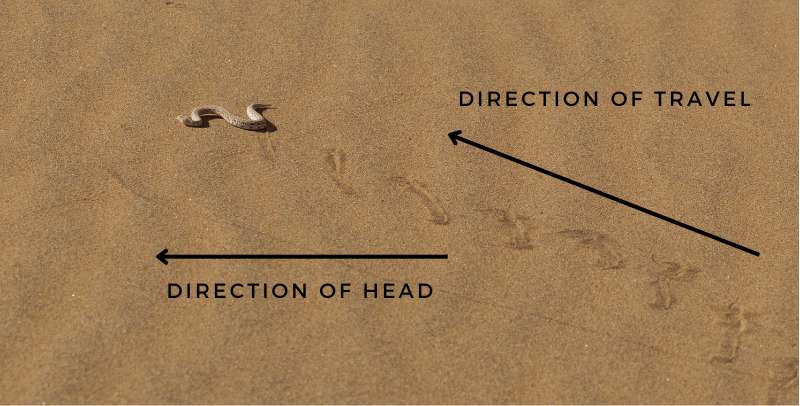
Conclusion
A slithering snake is a sight to behold and one that has fascinated people for hundreds of years. Locomotion in snakes is remarkably complex and involves intricate neuromuscular coordination refined by natural selection over millions of years, making it – and them – true natural wonders.
Related Now I Wonder Posts
To learn more about snakes, check out these other Now I Wonder posts:
- Can snakes swim?
- Can you tell a snake is venomous by the shape of its head?
- Cottonmouths vs. water moccasins: What you need to know
- Do snakes eat other snakes?
- Can snakes climb trees?
- Why do snakes climb trees?
- Pythons, boas, anacondas: Meet the world’s biggest snakes
- What are the world’s biggest snakes afraid of?
References
Conant R, Collins JT. 1998. A field guide to reptiles and amphibians; eastern and central North America. 3rd ed. Peterson Field Guide Series. Boston (MA): Houghton Mifflin Co.
LaGasse P. 2018. Racer. In: The Columbia Encyclopedia. 8th ed. Columbia University: Columbia University Press.
Liu C. 2021. Center of Gravity. In: Handy Answer: The Handy Physics Answer Book. 3rd ed. Visible Ink Press.
Bergen G, Stevens M, Burns ER. 2016. Falls and fall injuries among adults aged >65 years – United States, 2014. Atlanta: U.S. Center for Disease Control. 993 p.



